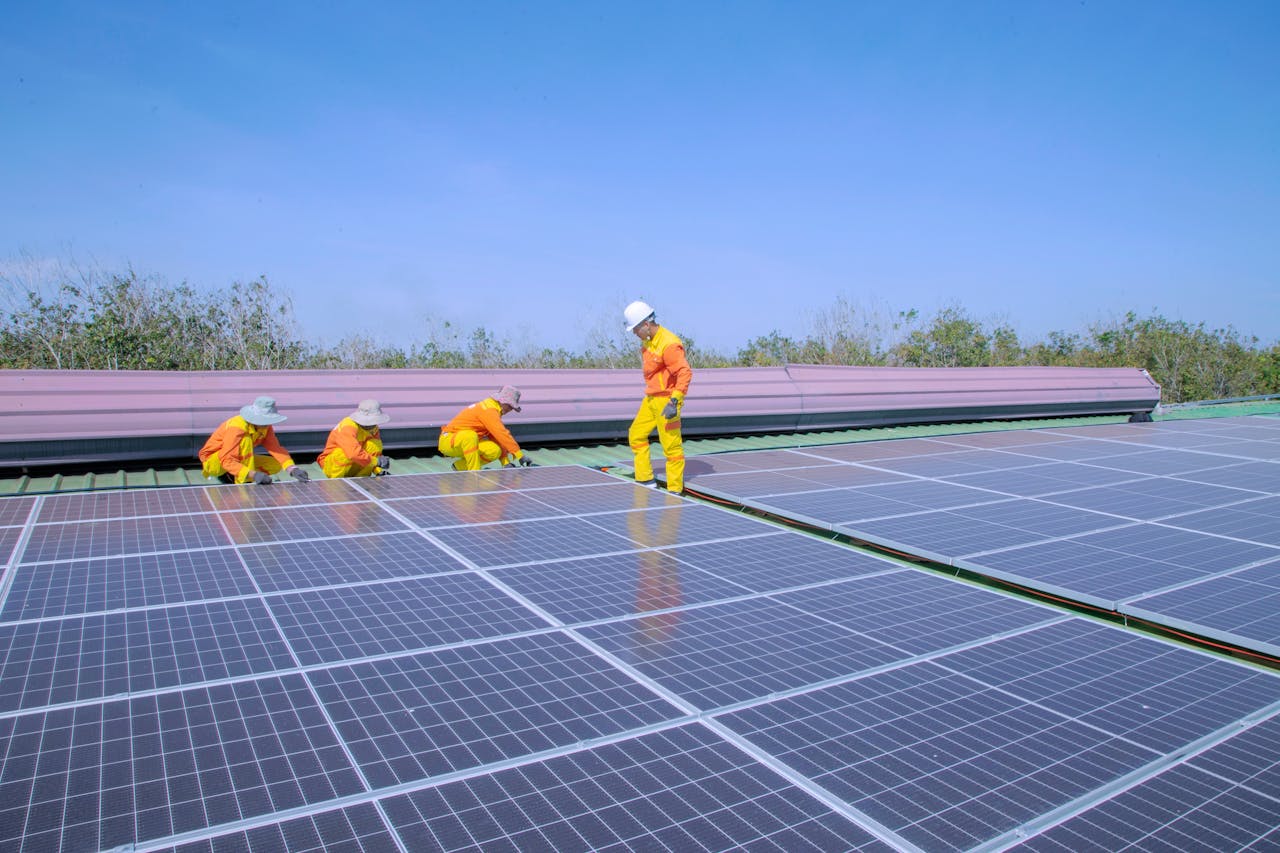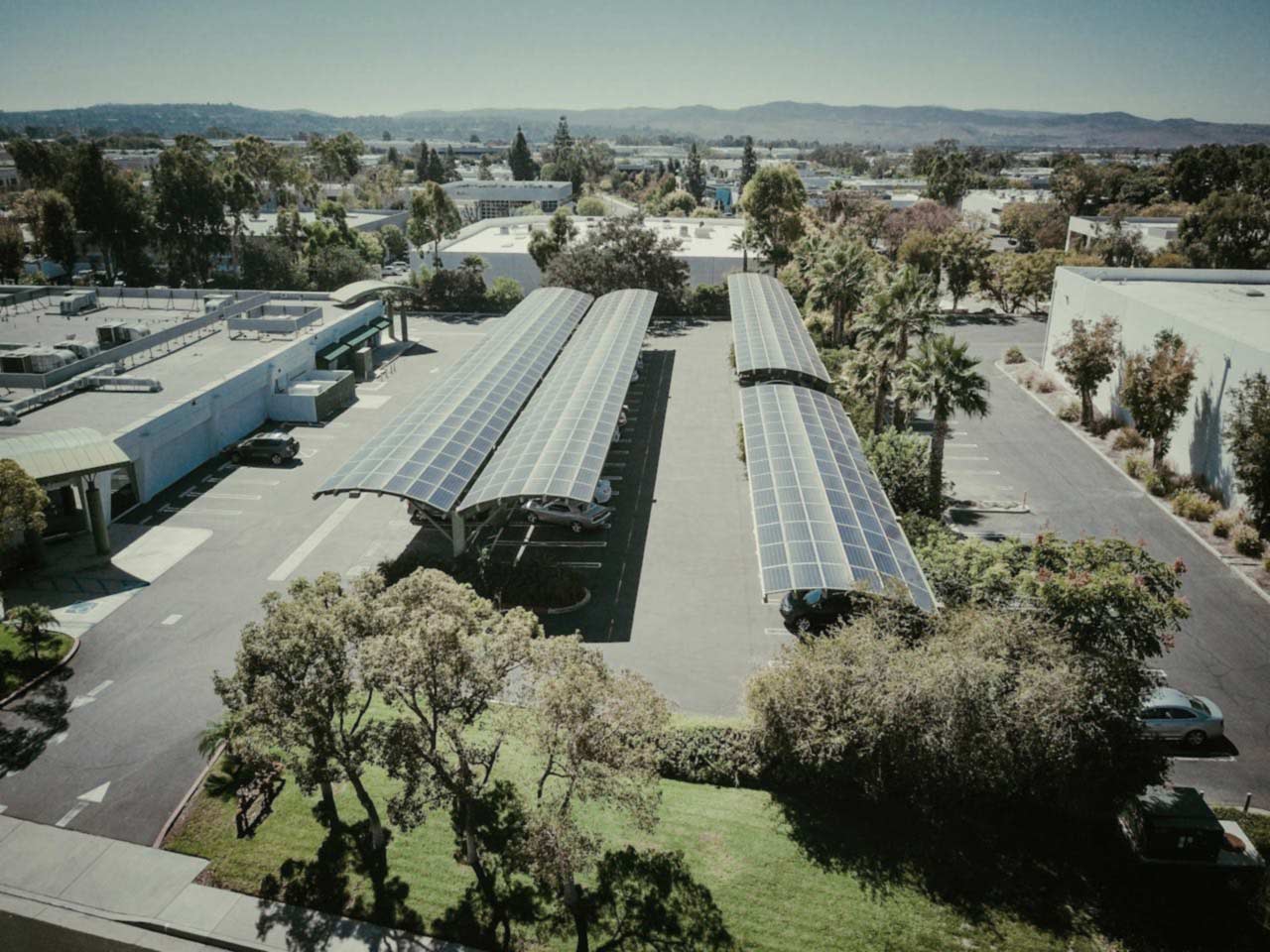Tired of skyrocketing electricity bills? The solution could be your unused land. Ground mount solar system is revolutionising how you generate electricity.
India has installed 78.47 GW of ground-mounted solar capacity by February 2025, the largest form of solar installation in the country as per Ministry of New and Renewable Energy.
These are nine key factors to consider before making such a large investment in solar power.
Also Read: The Ultimate Guide to Ground Mount Solar Systems
Land Requirements and Space Assessment
For those who contemplate investing in a ground mount solar system, evaluate the available land carefully before taking the plunge. These systems require a lot of open space with little to no shading, unlike rooftop systems. For a system of 5 kW, an unobstructed area of about 30 to 40 square meters will be required.
The quality of your land matters as well. However, flat terrain is preferable although modern mounting systems will accommodate slight slopes. Keep in mind that once this part of your property is installed, this will be used to generate energy for 25+ years. So plan for your long-term land use as carefully as you can.
Soil Quality and Foundation Options
The soil conditions have a very important role in the stability of your ground mounted solar panels. Soil composition determines which foundation approach to use.
• Rocky soil: May require concrete foundations
• Sandy soil: Might need deeper piles or ground screws
• Clay soil: Could require special consideration for seasonal expansion/contraction
Professional soil testing prior to installation helps determine the most appropriate foundation method. This ensures your system stays stable during monsoons, high winds and other weather conditions that are typical in India.
Solar Exposure and Orientation
Optimal positioning is a big advantage of ground mount solar system over rooftop installations. South-facing panels generate maximum energy in India, but your location is the deciding factor.
• Northern India: 25-30° tilt angle, south-facing
• Central India: 20-28° tilt angle, south-facing
• Southern India: 14-21° tilt angle, south-facing
A professional site assessment will also identify potential shading issues from trees, buildings or other structures that may affect generation throughout the day and across seasons.
Also Read: Module Mounting Structures for Ground Mount Solar Installations
Regulatory Compliance and Permissions
To install a ground mount solar system, you have to go through a number of regulations and get the required approvals from different authorities to make sure it is legal to operate and avoid costly penalties and delays in the project phases. This includes:
• Local panchayat or municipal approvals
• Land use permissions (especially important for agricultural land)
• Grid connection permits from your state electricity board
• Environmental clearances in certain areas
However, approval by states may vary as well, so it is a good practice to work with experienced solar providers, such as Enerparc, who can fill out paperwork quickly and correctly to guide you through the approval process.
System Design and Configuration Options
Optimal selection of components, spatial positioning and technical properties were determined by engineering specifications to obtain the highest possible harness of energy while ensuring both structural containment and aesthetic integration of its features into present architectural characteristics. There are different configurations for ground mounted solar projects:
• Fixed-tilt systems: Most common and cost-effective
• Seasonal-tilt systems: Provide manual adjustability for the greatest seasonal sun angles
• Single-axis trackers: Boost the power output by 30-35% with the help of east-to-west movement tracking
• Dual-axis trackers: Follow both daily and seasonal sun movements, maximising output but at a higher cost
This decision will depend on your budget, energy needs, and the space you can offer. If you want to, Enerparc’s technical team can assist you in deciding which configuration will best return your investment in terms of your particular case.
Also Read: Ground Mounted Solar Panels vs Roof Solar Panels: Which Is Right for Your Property?
Cost Analysis and Financial Considerations
Solar panels ground mounted systems, usually are 10 to 25 per cent more expensive than comparable rooftop installations because of additional structural requirements and land preparation. But they usually produce more electricity because they are positioned optimally.
Current costs in India range from ₹45,000-55,000 per kW for standard fixed systems, with single-axis tracking systems costing 20-25% more and dual-axis tracking systems costing 30-40% more. Factor in:
• Initial installation costs
• Land value considerations
• Maintenance requirements
• Potential agricultural production loss if using farmland
• More energy yield than rooftop systems
Subsidies for solar installations are provided by many states, and net metering policies enable you to return the excess electricity you generate to the grid and get a higher return on that investment.
Grid Connection and Power Distribution
The technical infrastructure for uninterrupted flows of electricity between solar generation systems and utility networks, including safety mechanisms, and monitoring capability for management of energy under changing demand conditions. Consider:
• Distance to connection point: Longer distances mean more cabling and higher costs
• Transformer requirements: Larger systems may need dedicated transformers
• Net metering setup: Ensures you receive credit for excess power
• Inverter selection: Must comply with local grid codes
Find experienced providers who know the grid connection requirements in your state and can design a system that meets all technical specifications.
Maintenance and Accessibility
Strategic planning for integrated system care requirements, featuring appropriate access points that ensure optimal cleaning and repair, as well as replacement of components so as to maximise usefulness and minimise disruption of normal property operations.
One major advantage of a ground mounted solar PV system is easier maintenance access. But you’ll need to take into consideration the following factors:
• Panel cleaning: Dust and pollen accumulating on the panel could reduce efficiency by 5–10%.
• Vegetation management: Regular trimming to avoid shading and fire hazards
• Seasonal inspections: Inspecting for weather damage and loose connections
• Security measures: Monitoring or fencing systems to prevent theft or vandalism
Since these maintenance tasks occur at ground level, they are easier and safer than rooftop ones with the possibility to increase your system lifespan.
Environmental Impact and Land Management
Ecologically sensible balancing of the renewable energy benefits with the effects of on-site modification, smart, and responsible construction practices and related sustainable landscape approaches that protect natural resources and enhance biodiversity through landscape design.
Think about how your ground mount solar system will interact with its surrounding environment:
• Water runoff management: Proper drainage to prevent erosion
• Native vegetation: Planting low-growing native species between panels
• Wildlife considerations: Fencing design that allows small animal movement
• Dual-use possibilities: Some crops or grazing can coexist with elevated panels
When planned carefully, your ground mount system can even help to put your property on an environmentally positive path.
Frequently Asked Questions (FAQs):
What is the standard ROI for solar carport installation in India?
A typical 5kW system costs between ₹2.5-4 lakhs, with prices varying based on mounting structure and location. The ROI or payback period for a ground mount solar system in India is typically in the range of 4-6 years, after which the electric power generated shall be free of cost except for a minor routine maintenance.
Can I install ground mount solar on agricultural land?
Yes, with proper permissions. Many states in India are increasingly allowing dual-use installations (known as “agrivoltaics”) that maintain agricultural productivity.
This approach uses solar structures that are elevated 2-3 meters high, creating spaces under the panels or between them for crop production, offering benefits in terms of both energy generation and agriculture.
How much time does it take to install a ground mount system?
It takes approximately 13 to 14 days to set up the ground mount solar system. This duration depends on how large and complex the system is, and the conditions of the ground. But the entire process from planning to connecting it to the grid takes 8-12 weeks, including permits, inspections, and utility. approvals
To Sum Up
Ground mount solar system provides greater flexibility, better positioning, and easier maintenance than rooftop versions. After analysing these nine factors, you will be ready to make any decision regarding your solar investment.
So, are you ready to explore if a ground mounted solar structure is right for you? Contact Enerparc today for a free site assessment and custom solution tailored to your energy needs and property conditions.






